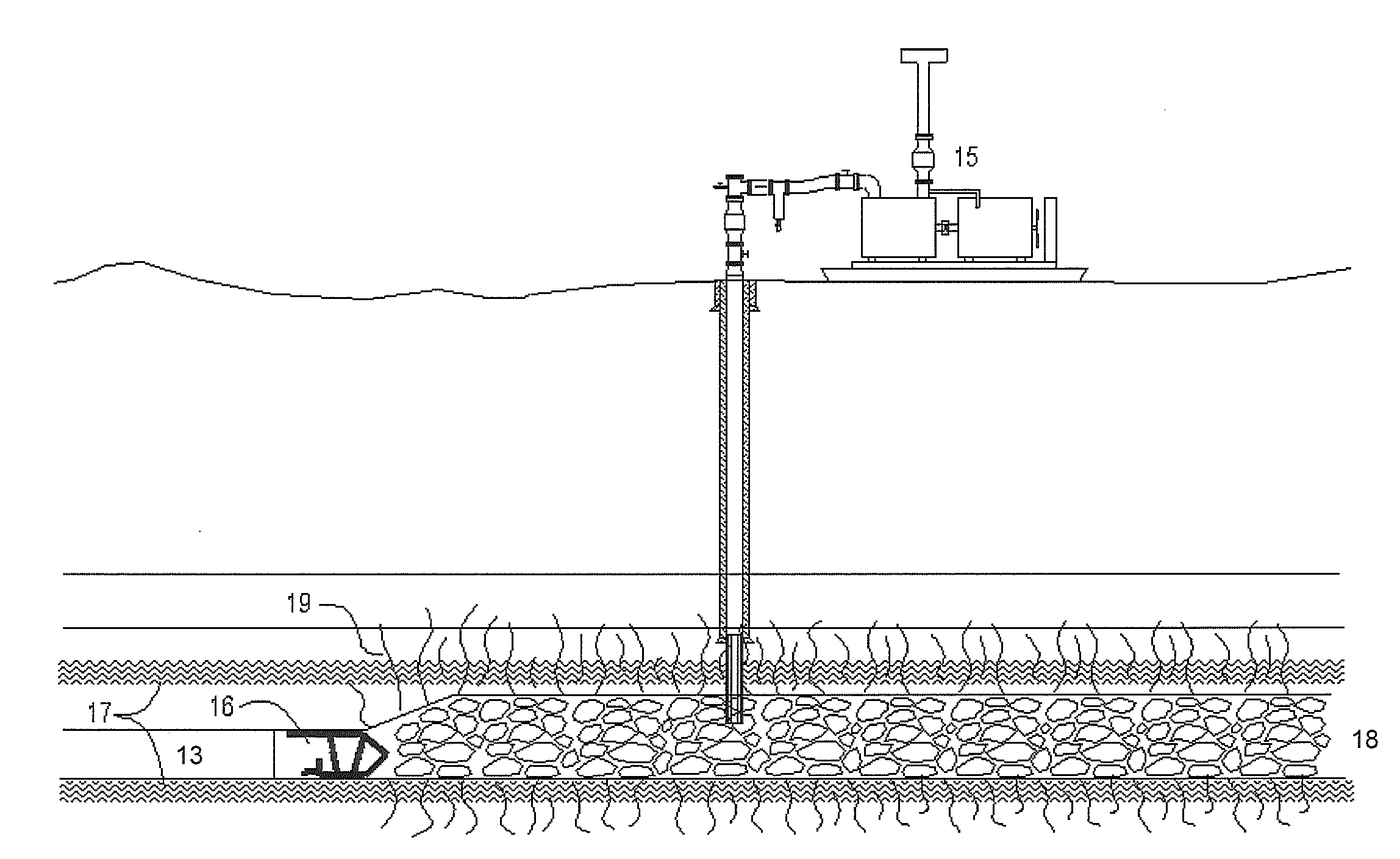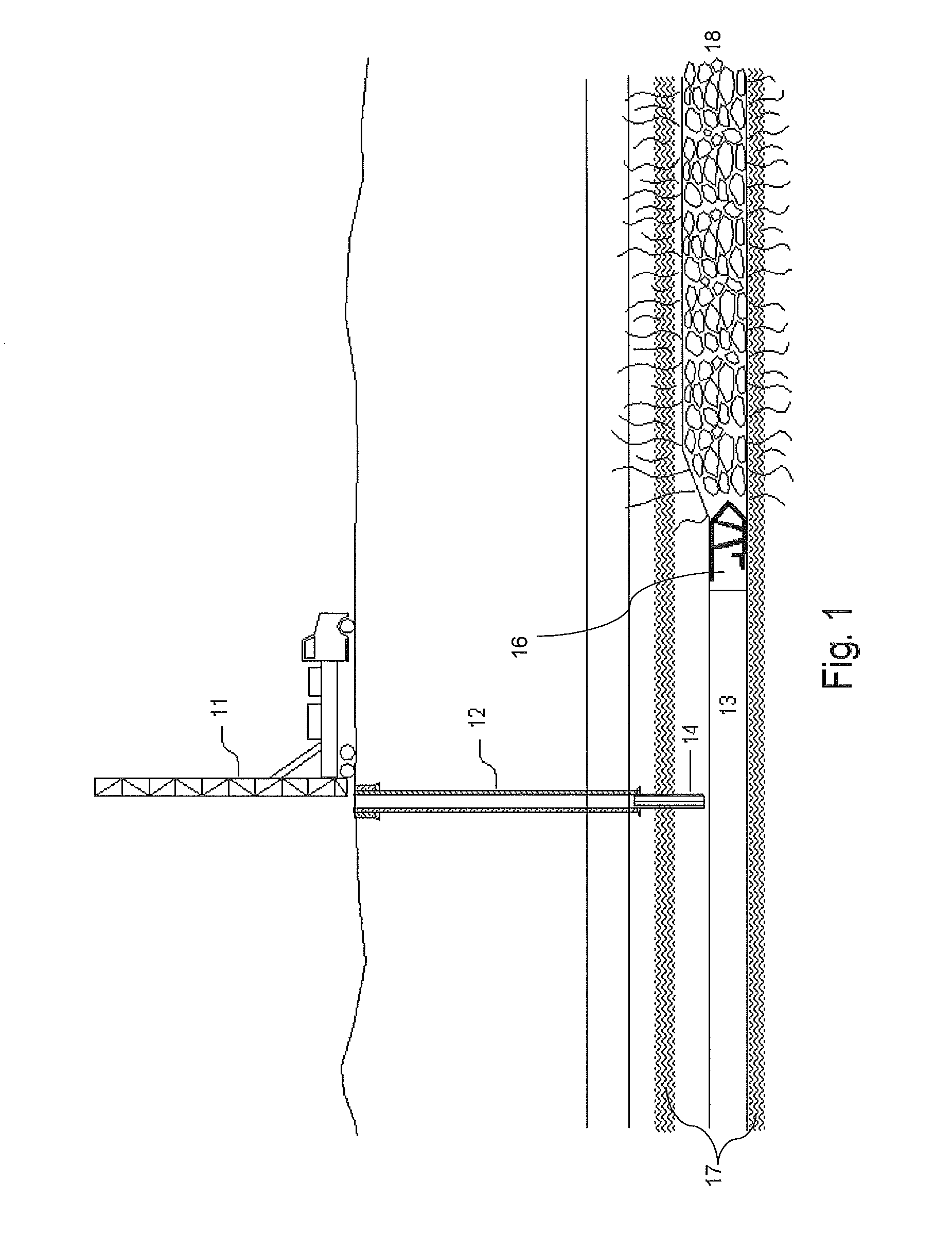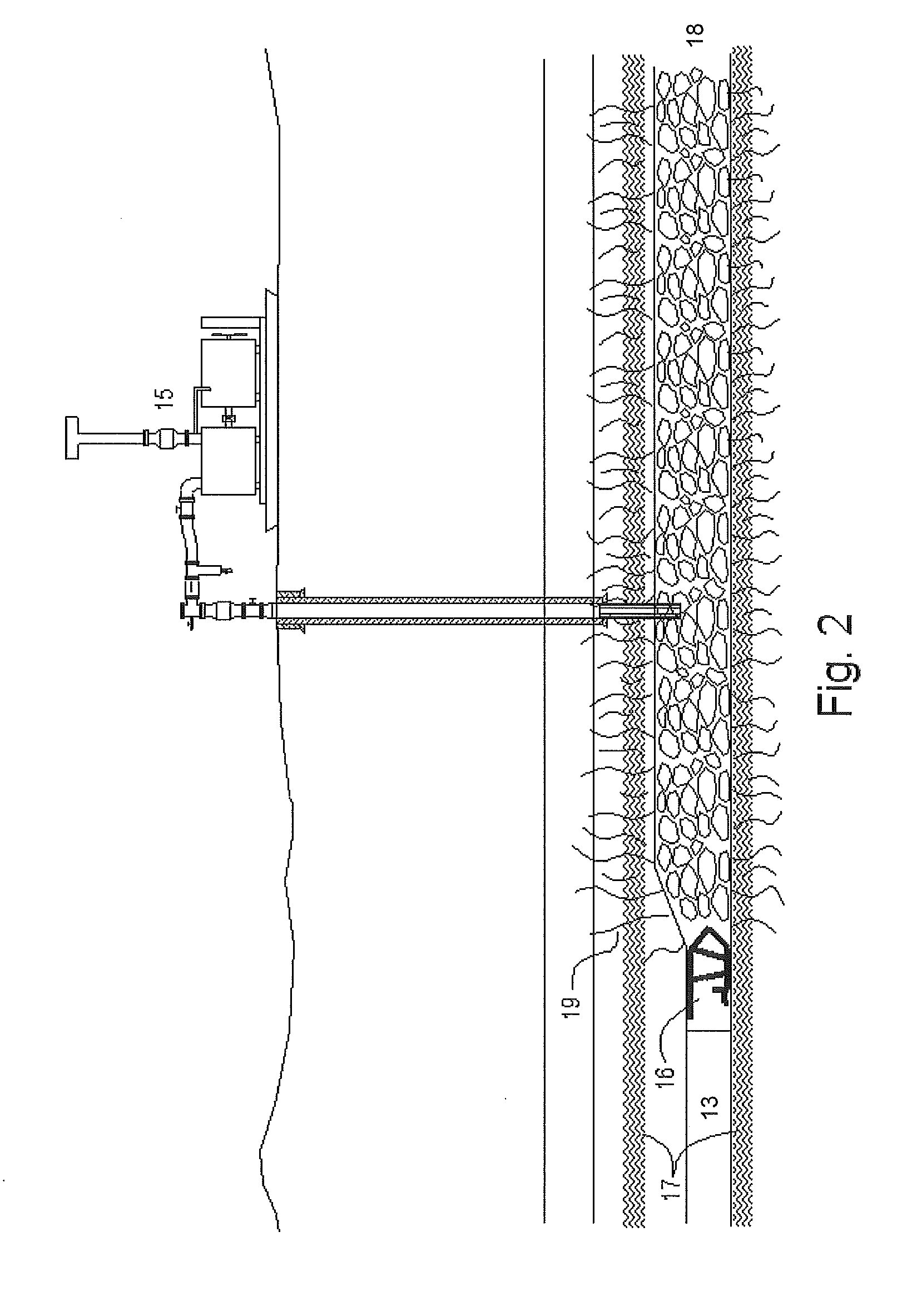Mining method for co-extraction of non-combustible ore and mine methane
a mine methane and non-combustible ore technology, which is applied in the field of mine methane coextraction, can solve the problems of large volume of dilution air, mine methane liberation, loss of valuable minerals, etc., and achieve the effect of a safer working environment underground
- Summary
- Abstract
- Description
- Claims
- Application Information
AI Technical Summary
Benefits of technology
Problems solved by technology
Method used
Image
Examples
example 1
[0100]Methane was recovered from the gob 18 of the operating underground long-wall trona mining system as illustrated in FIG. 1 and 2. This was accomplished with the use of a vertical well, also known as gob vent bore (GVB), shown as 12 on FIG. 1 drilled from the surface to a depth just above a 2.7-kmn long long-wall trona panel shown as 13 on FIG. 1. The surface location of the vertical well 12 was offset from the axial centerline 25 of the trona panel 13 (as illustrated in the plan view in FIG. 3). The vertical gob vent bore 12 was drilled in advance of the long-wall face. The GVB 12 consisted of a cased wellbore drilled with a rubber-tired mounted drill rig 11 to a depth approximately 75 m (about 250 feet) above the roof of the trona panel 13. After a solid steel casing was cemented in place, the well was drilled to approximately 6 meters (about 20 feet) to a location above the roof of the trona panel 13. A slotted or perforated casing, shown as 14 in FIG. 1, was then lowered at ...
example 2
[0102]As in Example 1, a second GVB well (for example as shown as well 12′ in FIG. 3) can be drilled at a distance of 1360 meters (or about 4500 ft) from the first GVB 12, also from a surface location which is offset from the axial centerline 25 of the 2.7 km trona panel 13.
[0103]The first GVB 12 in the panel continues to produce mine methane as the long-wall face advances toward the second GVB 12′. When the long-wall face advances under the second GVB 12′, a second methane extraction pumping system similar to the system 15 shown in FIG. 2 is started to produce additional methane. Both pumping systems continue to produce mine methane as the long-wall face advances. Both pumping systems can be operated as long as mine methane is available. The process can then be repeated in an adjacent long-wall panel.
PUM
 Login to View More
Login to View More Abstract
Description
Claims
Application Information
 Login to View More
Login to View More - R&D
- Intellectual Property
- Life Sciences
- Materials
- Tech Scout
- Unparalleled Data Quality
- Higher Quality Content
- 60% Fewer Hallucinations
Browse by: Latest US Patents, China's latest patents, Technical Efficacy Thesaurus, Application Domain, Technology Topic, Popular Technical Reports.
© 2025 PatSnap. All rights reserved.Legal|Privacy policy|Modern Slavery Act Transparency Statement|Sitemap|About US| Contact US: help@patsnap.com



